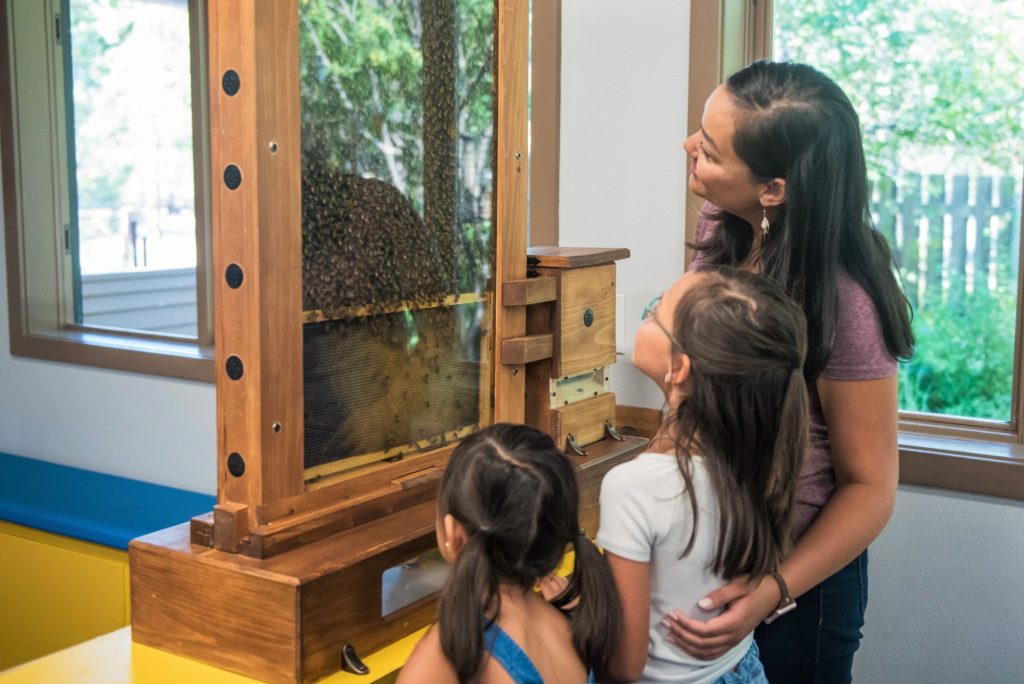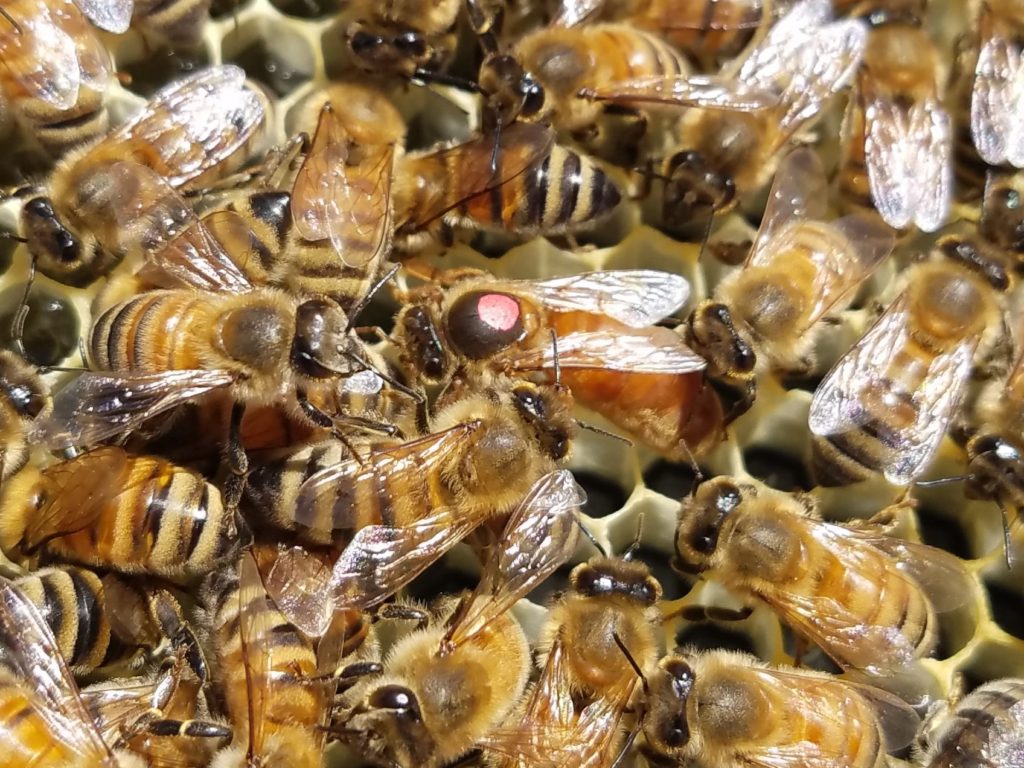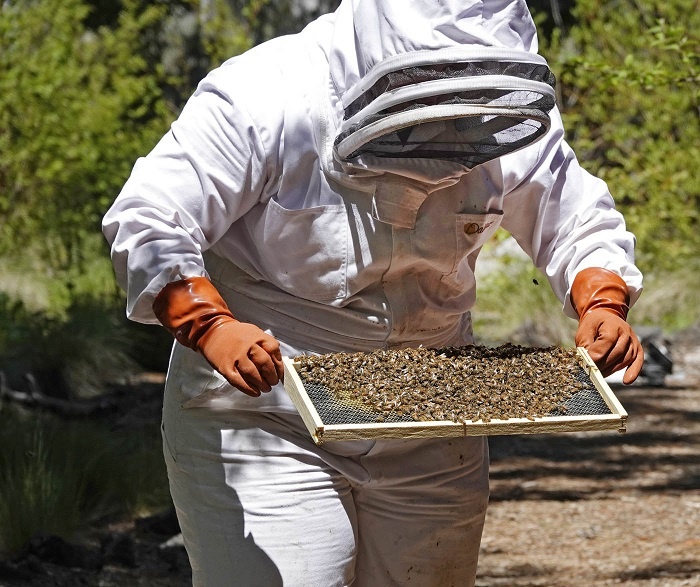Honey Bee Observation Hive
Sunriver Nature Center & Observatory is home to a live honey bee colony. The colony consists of approximately 10,000 worker bees and a queen bee that live year-round indoors within the nature center in an observation beehive. This special type of beehive allows visitors to view the activity of the busy bees behind glass while indoors. The bees are able to come and go as they please from the hive via a transparent tunnel through the wall and out to the botanic garden and the wide expanses of Sunriver.
A typical beehive is home to the European honey bee. The European honey bee was transported to North America centuries ago to provide a source of honey and wax while providing a critical agricultural service through crop pollination. Each hive is home to a single queen bee whose main task is to lay eggs. The eggs hatch and develop into larvae, then pupae, and then after about three weeks, into an adult honey bee. Most of the adult honey bees in a colony are females, called ‘worker’ bees. These bees do exactly what their name implies – they work to maintain the hive. Worker bees do everything from clean the hive, care for developing baby bees, guard the hive from predators, and search for and collect nectar and pollen. Each hive usually also contains a small number of male bees, called drones. Drones do not contribute to the functioning of the home hive; in fact they even lack stingers. Instead, drones seek out unrelated queen bees to mate with – an act that is fatal to the drone bee!
The observation hive provides a unique opportunity to observe many fascinating honey bee behaviors that only beekeepers typically have the privilege of witnessing. For example, during the peak of summer, you can spot worker bees returning to the hive after a foraging trip to collect pollen and nectar. These bees are easily spotted by the large sacs of bright yellow or orange (and sometimes even purple) pollen on their hind legs. Once the worker bee returns with her pollen treasure she performs a ‘waggle dance’ in the hive to let her fellow sisters know where to find these nectar and pollen sources. In place of Google maps or GPS to give directions, bees have evolved a spectacular series of dances that allow them to communicate distance and direction of flower resources to the other bees inside the hive. The observation hive allows visitors a chance to see the bees’ dance up close and if you are really inclined, learn how to dance like a bee from one of our naturalists!
The observation beehive is cared for year-round by our team of naturalists and our nature center manager, who happens to be a beekeeper in her spare time. We look forward to introducing you to our tiniest residents and sharing our enthusiasm for bees, beekeeping and pollinators. Buzz by soon!



